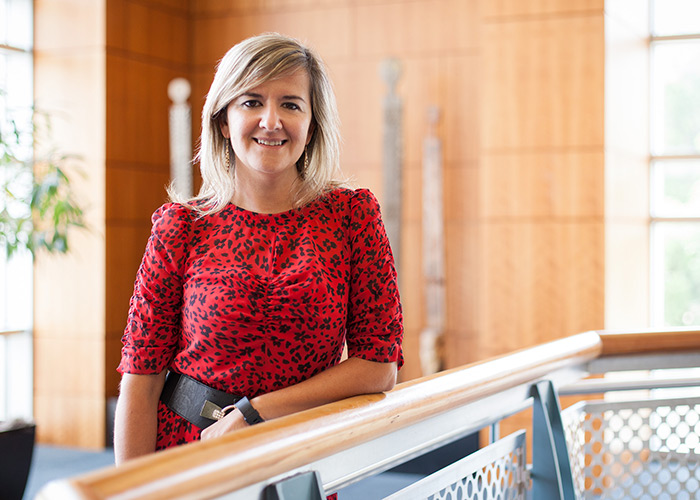Physicist Claudia Ratti Studies What Happened After the Big Bang
A theoretical physicist from the University of Houston is seeking answers to fundamental questions about the nature of the universe, studying the interactions of elementary particles for clues to what happened in the microseconds after the Big Bang.
 Theoretical physicist Claudia Ratti has received a $475,000 Early CAREER award from
the National Science Foundation.Claudia Ratti, assistant professor of physics at UH’s College of Natural Sciences
and Mathematics, has received a five-year, $475,000 Early CAREER award from the National
Science Foundation to continue her work.
Theoretical physicist Claudia Ratti has received a $475,000 Early CAREER award from
the National Science Foundation.Claudia Ratti, assistant professor of physics at UH’s College of Natural Sciences
and Mathematics, has received a five-year, $475,000 Early CAREER award from the National
Science Foundation to continue her work.
Ratti studies what is known as the quark-gluon soup, normally invisible elementary particles located inside protons and neutrons. Physicists know the universe was in a quark-gluon plasma phase in the microseconds after the Big Bang, the most commonly accepted explanation for how the universe began.
But it has been difficult to study that state of matter, leaving much about the origin of the universe a mystery. Work at the Large Hadron Collider in Switzerland and the Relativistic Heavy Ion Collider at Brookhaven National Laboratory, along with advances in high-speed computing, are allowing scientists to learn more.
Physicists at the colliders are able to recreate the conditions immediately following the Big Bang, allowing them to study the formation of matter. Ratti – through simulations run on powerful computers at Argonne National Laboratory – calculates the physical properties needed for the collider experiments.
“For the first time, the calculations we have are so precise we can match them to reality,” she said, noting that today’s powerful computers make that possible. She has been funded by the U.S. Department of Energy to cover computer time at the Argonne lab.
One of the goals is to understand how the transition from visible matter to the quark-gluon plasma takes place. “We know the phase transition is very smooth at low densities,” Ratti said. “At the moment, the nature of the transition at high densities is vastly under-explained, so my project should help with the understanding.”
NSF CAREER awards are granted to highly promising junior faculty members who exemplify the role of teacher-scholars.
In addition to her work in understanding the quark-gluon plasma state, the NSF award will allow Ratti to expand her efforts to promote science, both within the University and with high school students.
“I enjoy working with undergraduates, because they are the next generation of scientists,” she said. Her research team, which includes a postdoctoral researcher, two Ph.D. students and four undergraduates, will also be involved in bringing high school students on campus for a “day in the life” of a scientist, from projects to find and analyze data to the opportunity to talk with other scientists about their results, either in person or via Skype and videoconference.
Women are under-represented in physics and other STEM fields, and Ratti hopes to share her passion for the field.
“Physics always fascinated me, because I wanted to understand nature and how it worked,” she said. “Physics was the most fundamental basis of that.”
- Jeannie Kever, University Media Relations